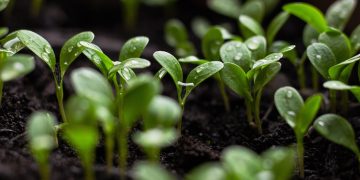The EU produces a wide range of fresh vegetables and fruit. Fresh vegetables were cultivated on 2.0 million hectares of land across the EU in 2022, on which 59.8 million tonnes of crops were harvested. The three most commonly grown fresh vegetables – in quantity terms – were tomatoes (15.4 million tonnes of harvested production), onions (6.2 million tonnes) and carrots (4.4 million tonnes).
In 2022, the EU produced 14.7 million tonnes of pome fruit (12.6 million tonnes of apples and 2.1 million tonnes of pears), 10.5 million tonnes of citrus fruit, 6.3 million tonnes of stone fruit (such as peaches, nectarines, apricots, cherries, and plums), 2.6 million tonnes of sub-tropical and tropical fruit (such as figs, kiwis, avocados, and bananas), 1.1 million tonnes of nuts and 0.7 million tonnes of berries.
This article presents just a handful of information from the Key Figures on the European food chain, 2023 edition and the Statistics Explained article on the fruit and vegetable sector in the EU.
Production of certain fresh vegetables was concentrated in specific EU countries. For example, Italy accounted for 40% of the EU’s harvested tomatoes in 2022, followed by Spain (24%) and Portugal (9%).
Source dataset: apro_cpsh1
The Netherlands was the leading onion producer, with nearly one quarter (24%) of the EU’s harvested onions, ahead of Spain (20%) and France (12%). Top producers of carrots were Germany (18% of the EU total), France (15%) and Poland (14%).
Italy, Poland, Spain and France were the main producers of fruit, berries and nuts (excluding citrus fruit, grapes and strawberries) in the EU, although for some specific fruits, other EU Member States were also key producers.
Source dataset: apro_cpsh1
The main EU apple producers in 2022 were Poland (34%), Italy (18%) and France (14%).
As for peaches, 3 countries accounted for over 90% of peach production: Italy (34%), Greece (33%) and Spain (24%), leaving the remaining EU countries to contribute just 9%.
Italy (25%), the Netherlands (17%) and Belgium (17%) were the main producers of pears.
O artigo foi publicado originalmente em Eurostat.



















































